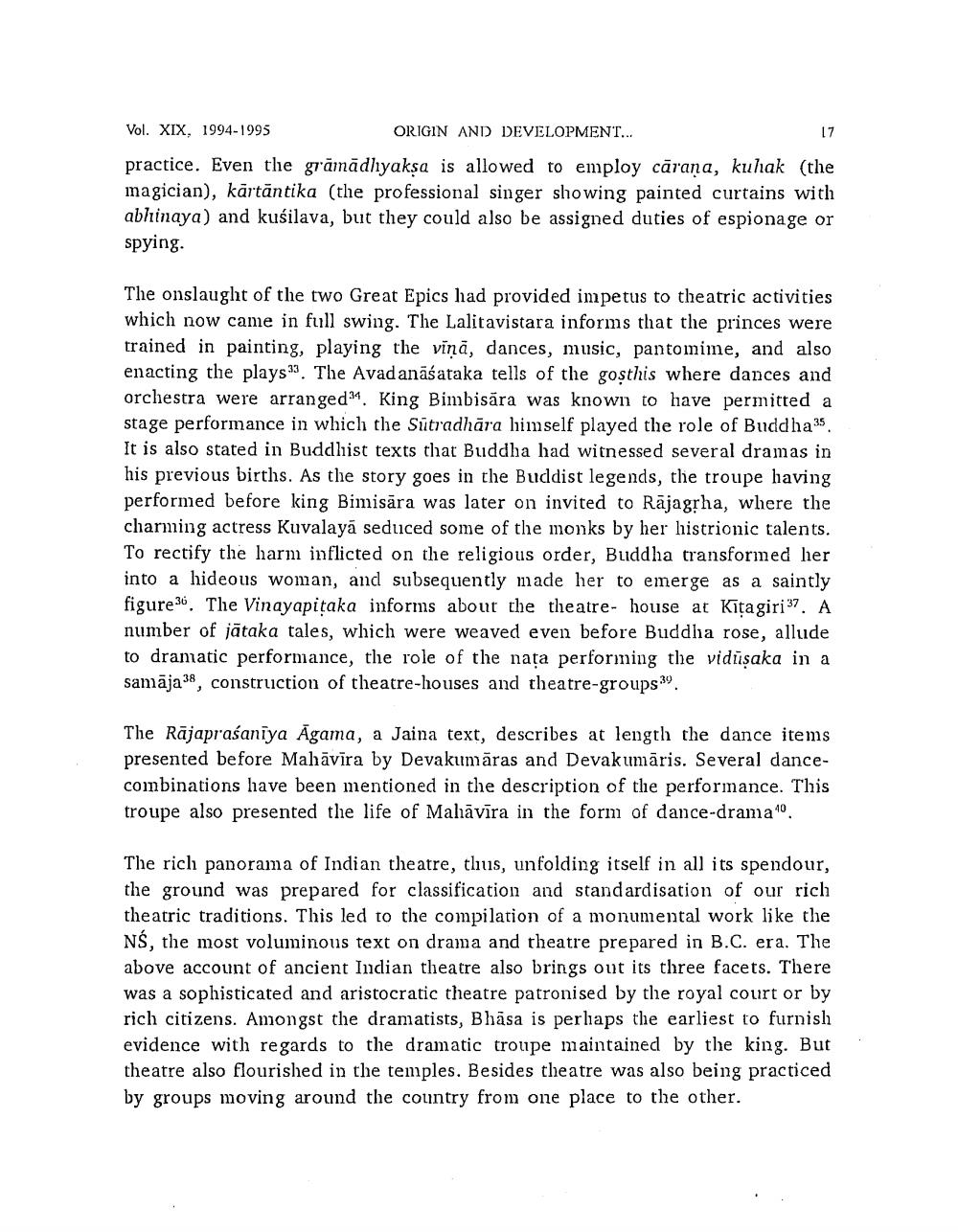________________
Vol. XIX, 1994-1995
ORIGIN AND DEVELOPMENT...
practice. Even the grămadhyakṣa is allowed to employ carana, kuhak (the magician), kārtāntika (the professional singer showing painted curtains with abhinaya) and kuśilava, but they could also be assigned duties of espionage or spying.
17
The onslaught of the two Great Epics had provided impetus to theatric activities which now came in full swing. The Lalitavistara informs that the princes were trained in painting, playing the vina, dances, music, pantomime, and also enacting the plays. The Avadanāśataka tells of the gosthis where dances and orchestra were arranged". King Bimbisära was known to have permitted a stage performance in which the Sutradhara himself played the role of Buddha. It is also stated in Buddhist texts that Buddha had witnessed several dramas in his previous births. As the story goes in the Buddist legends, the troupe having performed before king Bimisära was later on invited to Rajagṛha, where the charming actress Kuvalaya seduced some of the monks by her histrionic talents. To rectify the harm inflicted on the religious order, Buddha transformed her into a hideous woman, and subsequently made her to emerge as a saintly figure. The Vinayapitaka informs about the theatre- house at Kitagiri. A number of jātaka tales, which were weaved even before Buddha rose, allude to dramatic performance, the role of the nata performing the vidûşaka in a samaja38, construction of theatre-houses and theatre-groups.
The Rajaprasaniya Agama, a Jaina text, describes at length the dance items presented before Mahavira by Devakumaras and Devakumaris. Several dancecombinations have been mentioned in the description of the performance. This troupe also presented the life of Mahavira in the form of dance-drama",
The rich panorama of Indian theatre, thus, unfolding itself in all its spendour, the ground was prepared for classification and standardisation of our rich theatric traditions. This led to the compilation of a monumental work like the NŚ, the most voluminous text on drama and theatre prepared in B.C. era. The above account of ancient Indian theatre also brings out its three facets. There was a sophisticated and aristocratic theatre patronised by the royal court or by rich citizens. Amongst the dramatists, Bhasa is perhaps the earliest to furnish evidence with regards to the dramatic troupe maintained by the king. But theatre also flourished in the temples. Besides theatre was also being practiced by groups moving around the country from one place to the other.




